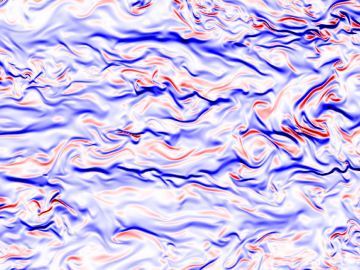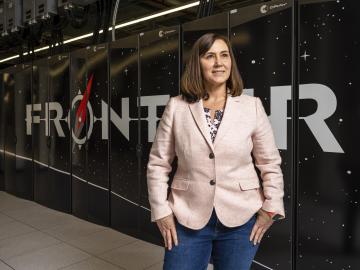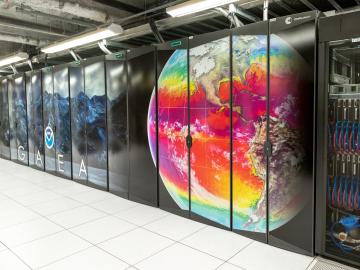
Filter News
Area of Research
- (-) Energy Science (34)
- (-) Fusion and Fission (37)
- (-) Supercomputing (78)
- Advanced Manufacturing (2)
- Biology and Environment (39)
- Biology and Soft Matter (1)
- Computational Biology (1)
- Computer Science (3)
- Electricity and Smart Grid (1)
- Functional Materials for Energy (1)
- Fusion Energy (7)
- Isotopes (20)
- Materials (56)
- Materials Characterization (1)
- Materials for Computing (10)
- Materials Under Extremes (1)
- National Security (18)
- Neutron Science (19)
- Nuclear Science and Technology (20)
- Quantum information Science (2)
News Type
News Topics
- (-) Computer Science (57)
- (-) Frontier (21)
- (-) Fusion (18)
- (-) Isotopes (2)
- (-) Materials Science (21)
- (-) Nuclear Energy (24)
- (-) Polymers (3)
- (-) Security (5)
- 3-D Printing/Advanced Manufacturing (34)
- Advanced Reactors (5)
- Artificial Intelligence (27)
- Big Data (19)
- Bioenergy (15)
- Biology (12)
- Biomedical (11)
- Biotechnology (2)
- Buildings (16)
- Chemical Sciences (10)
- Clean Water (3)
- Composites (4)
- Coronavirus (14)
- Critical Materials (1)
- Cybersecurity (9)
- Education (1)
- Energy Storage (31)
- Environment (38)
- Exascale Computing (19)
- Fossil Energy (1)
- Grid (14)
- High-Performance Computing (32)
- Hydropower (1)
- ITER (3)
- Machine Learning (10)
- Materials (20)
- Mathematics (3)
- Mercury (1)
- Microelectronics (1)
- Microscopy (8)
- Molten Salt (1)
- Nanotechnology (11)
- National Security (5)
- Neutron Science (11)
- Partnerships (5)
- Physics (6)
- Quantum Computing (12)
- Quantum Science (13)
- Simulation (16)
- Software (1)
- Space Exploration (3)
- Summit (24)
- Transportation (27)
Media Contacts

To support the development of a revolutionary new open fan engine architecture for the future of flight, GE Aerospace has run simulations using the world’s fastest supercomputer capable of crunching data in excess of exascale speed, or more than a quintillion calculations per second.

Simulations performed on the Summit supercomputer at ORNL revealed new insights into the role of turbulence in mixing fluids and could open new possibilities for projecting climate change and studying fluid dynamics.

At the National Center for Computational Sciences, Ashley Barker enjoys one of the least complicated–sounding job titles at ORNL: section head of operations. But within that seemingly ordinary designation lurks a multitude of demanding roles as she oversees the complete user experience for NCCS computer systems.

As renewable sources of energy such as wind and sun power are being increasingly added to the country’s electrical grid, old-fashioned nuclear energy is also being primed for a resurgence.

A trio of new and improved cosmological simulation codes was unveiled in a series of presentations at the annual April Meeting of the American Physical Society in Minneapolis.

Oak Ridge National Laboratory, in partnership with the National Oceanic and Atmospheric Administration, is launching a new supercomputer dedicated to climate science research. The new system is the fifth supercomputer to be installed and run by the National Climate-Computing Research Center at ORNL.

When virtually unlimited energy from fusion becomes a reality on Earth, Phil Snyder and his team will have had a hand in making it happen.

Environmental scientists at ORNL have recently expanded collaborations with minority-serving institutions and historically Black colleges and universities across the nation to broaden the experiences and skills of student scientists while bringing fresh insights to the national lab’s missions.

The Oppenheimer Science and Energy Leadership Program has selected Oak Ridge National Laboratory’s Jens Dilling and Christian Petrie as fellows for its 2023 cohort.

Seven scientists at the Department of Energy’s Oak Ridge National Laboratory have been named Battelle Distinguished Inventors, in recognition of their obtaining 14 or more patents during their careers at the lab.


